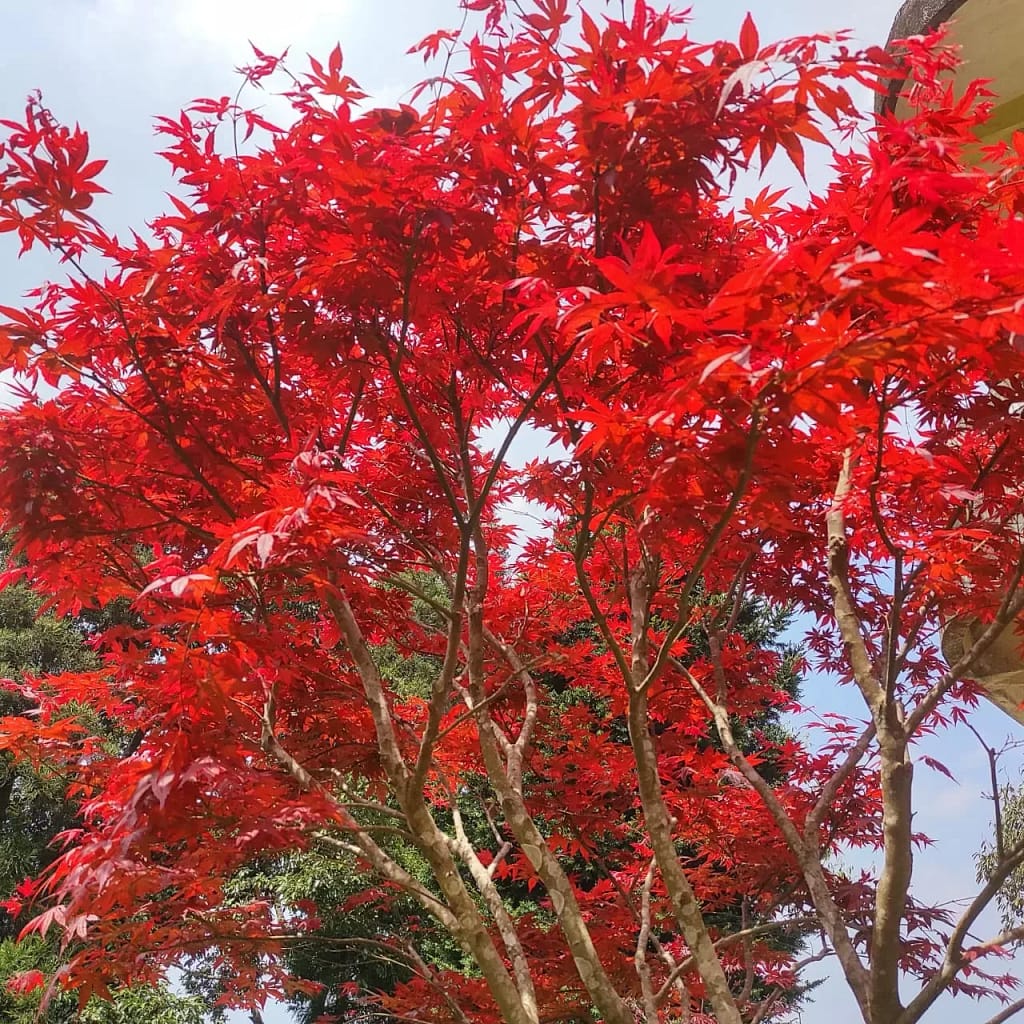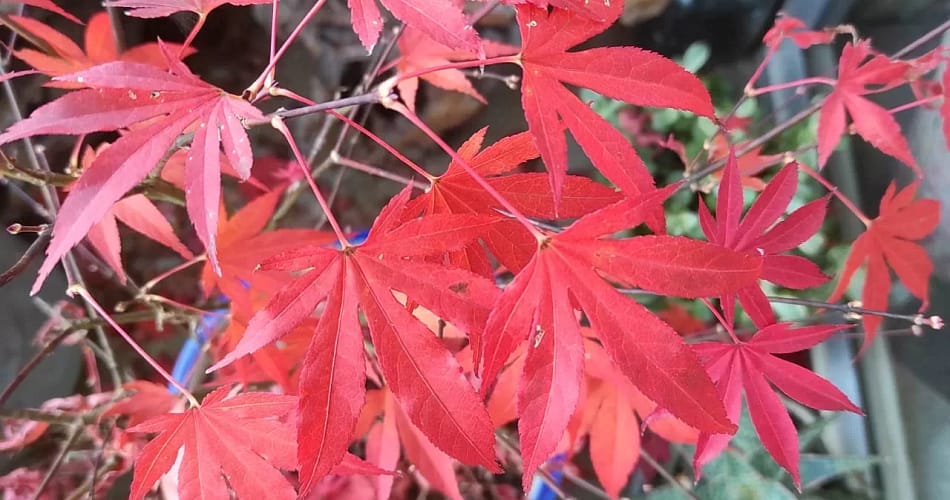Discover expert tips and tricks for growing Japanese Maple (Acer palmatum) indoors. Learn about planting, care, pruning, and common issues to maintain a healthy indoor Japanese Maple.
Introduction
The Japanese Maple (Acer palmatum) is a beloved ornamental tree known for its stunning foliage and graceful form. While typically grown outdoors, this tree can also thrive indoors with the right care and conditions. This comprehensive guide covers everything you need to know about planting and maintaining a Japanese Maple indoors, from selecting the right variety to troubleshooting common problems. Whether you’re an experienced gardener or a beginner, this guide will help you bring the beauty of this into your home.
Understanding Japanese Maple (Acer palmatum)
Characteristics of Japanese Maple
Renowned for their delicate, lobed leaves and striking fall colors, ranging from vibrant reds to oranges and yellows. These deciduous trees are native to Japan, Korea, and China, and have been cultivated for centuries. They are often used as focal points in gardens due to their aesthetic appeal and manageable size.
Benefits of Growing Japanese Maple Indoors
Growing this indoors offers several benefits, including year-round enjoyment of their beauty and the ability to control growing conditions. Indoor cultivation can also protect these trees from harsh weather and pests, ensuring a healthier and longer-lasting plant.
Selecting the Right Japanese Maple Variety for Indoors
Factors to Consider
When choosing a Japanese Maple for indoor growth, consider factors such as the tree’s mature size, growth rate, and light requirements. Dwarf and compact varieties are typically better suited for indoor environments.
Popular Indoor Varieties
Some popular Japanese Maple varieties for indoor growth include:
- Acer palmatum ‘Kiyohime’: A dwarf variety with a compact shape and vibrant green foliage.
- Acer palmatum ‘Shishigashira’: Known as the Lion’s Head Maple, it has dense foliage and a unique appearance.
- Acer palmatum ‘Red Dragon’: Features deep red foliage and a slow growth rate, making it ideal for containers.
Preparing for Planting
Choosing the Right Container
Choose a container with sufficient drainage holes to prevent waterlogging. Ensure the container is large enough to accommodate the tree’s root system and support its growth. As a general guideline, select a pot that is at least twice the size of the root ball.
Selecting the Ideal Soil
Japanese Maples prefer well-draining, slightly acidic soil. A high-quality potting mix, enhanced with perlite or sand, can improve drainage. Avoid using heavy garden soil, which can compact and restrict root growth.

Planting Japanese Maple Indoors
Step-by-Step Planting Guide
- Prepare the Pot: Place a layer of gravel or small stones at the bottom of the pot for drainage.
- Add Soil: Fill the pot halfway with potting mix.
- Position the Tree: Place the tree in the center of the pot, ensuring the root ball is covered with soil but not buried too deep.
- Fill and Firm: Add more potting mix around the root ball, pressing gently to remove air pockets.
- Water Thoroughly: Give the tree a thorough watering to help settle the soil.
Initial Care and Watering
After planting, place the pot in an area with bright, indirect light. Water the tree regularly to keep the soil evenly moist, but not waterlogged. Prevent the soil from drying out completely between waterings.
Caring for Indoor Japanese Maple
Light Requirements
Japanese Maples thrive in bright, indirect light. Place your tree near a window with filtered sunlight or use grow lights to supplement natural light. Avoid direct sunlight, coz sunlight can scorch the leaves.
Watering Schedule
Keep a consistent watering schedule to ensure the soil stays evenly moist. During the growing season, water more frequently, but reduce watering in the winter when the tree is dormant.
Temperature and Humidity Needs
Japanese Maples prefer temperatures between 60-75°F (15-24°C). They also benefit from higher humidity levels, so consider using a humidifier or placing a tray of water near the tree to increase humidity.
Fertilizing Tips
Fertilize your Japanese Maple during the growing season with a balanced, slow-release fertilizer. Avoid over-fertilizing, (cause leaf burn and other issues). A light feeding every six weeks is usually sufficient.
Pruning and Shaping
Best Practices for Pruning
Pruning is crucial for maintaining the shape and health of your Japanese Maple. Remove any dead or diseased branches and trim back overgrown areas to promote new growth. The ideal time to prune is late winter or early spring, before new growth starts.
Shaping Techniques
Shaping your Japanese Maple can enhance its aesthetic appeal. Use pruning shears to create a balanced shape, removing branches that cross or rub against each other. Regular pruning help to maintain a compact and attractive form.
Dealing with Pests and Diseases
Common Pests
Indoor Japanese Maples can be susceptible to pests such as aphids, spider mites, and scale insects. Regularly check your tree for signs of infestation and promptly treat any issues with insecticidal soap or neem oil.
Disease Prevention and Management
Fungal diseases such as powdery mildew and root rot can affect indoor Japanese Maples. Make sure a proper ventilation and avoid overwatering . If your tree shows signs of disease, remove affected areas and treat with appropriate fungicides.
Seasonal Care Tips
Winter Care
During the winter months, reduce watering and ensure your Japanese Maple is not exposed to cold drafts. Maintain consistent indoor temperatures and provide additional humidity if necessary.
Summer Care
In summer, your indoor Japanese Maple may require more frequent watering. Make sure it receives adequate light without direct exposure to harsh sunlight. Consider moving the tree outdoors to a shaded spot for a few hours each day, gradually acclimating it to outdoor conditions.
Troubleshooting Common Issues
Yellowing Leaves
Yellowing leaves can indicate several issues, including overwatering, nutrient deficiency, or lack of light. Adjust your care routine accordingly and check for pests or diseases.
Leaf Drop
Leaf drop can be caused by stress, changes in temperature, or improper watering. Ensure your Japanese Maple is in a stable environment with consistent care.
Stunted Growth
Stunted growth may result from insufficient light, poor soil conditions, or root-bound pots. Repot the tree if necessary and ensure it receives adequate light and nutrients.
Creative Display Ideas
Choosing Decorative Pots
Choose decorative pots that complement your home decor while providing adequate space for root growth. Consider using ceramic or clay pots with intricate designs to enhance the tree’s aesthetic appeal.
Integrating into Home Decor
Place your indoor Japanese Maple in a prominent location where it can be admired. Use it as a focal point in a room or incorporate it into a larger indoor garden setup for a lush, natural look.

